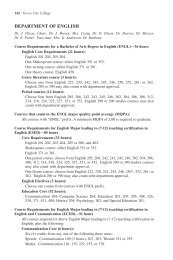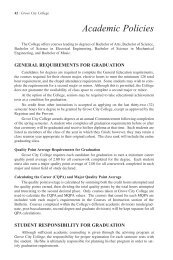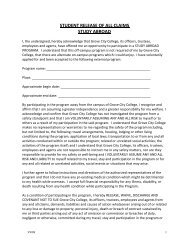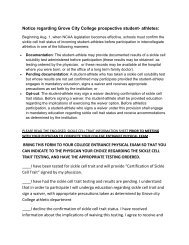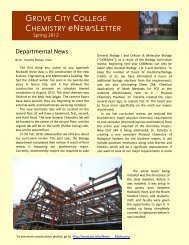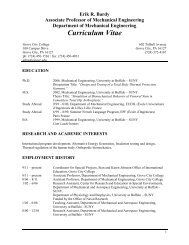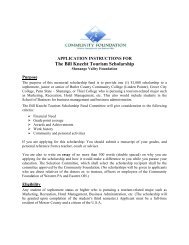A Review of Power-Generating Turbomachines - Grove City College
A Review of Power-Generating Turbomachines - Grove City College
A Review of Power-Generating Turbomachines - Grove City College
You also want an ePaper? Increase the reach of your titles
YUMPU automatically turns print PDFs into web optimized ePapers that Google loves.
Figure 7: a) Open-center in-stream tidal turbine developed by OpenHydro (www.openhydro.com) b) in-<br />
stream tidal turbine propeller rotor manufactured by Marine Current Turbines (www.marineturbines.com).<br />
While in-stream tidal turbine systems use relatively new turbine rotor technology, tidal<br />
barriers/dams can utilize conventional hydroelectric turbines. Specifically, the same kind <strong>of</strong> lowhead<br />
axial-flow turbines discussed in section 3. In tidal barrier/dam systems, water is collected<br />
and stored in a reservoir at high tide, and then released through turbines at low tide. The<br />
reservoir is created by a dam-like structure called a barrage and built in an estuary. Tidal<br />
systems can also be designed with more complex two-way hydroelectric turbines that generate<br />
electricity during both the reservoir charging and discharging stages. These setups rely on a<br />
natural resonant inshore frequency for successful operation. Hence, the inshore geological<br />
features are critically important. One downside is that power generation depends on the lunar<br />
cycle, causing power generation to occur at different times on different days, and therefore not<br />
always at the time <strong>of</strong> peak demand. 20<br />
Wave energy is less developed than tidal energy, but shows potential. While tidal systems can<br />
utilize relatively conventional hydroelectric turbines, there are many different concepts for<br />
mechanisms to extract energy from ocean waves. In particular, pneumatic turbines have found<br />
application in ocean energy converting systems. Two such pneumatic turbine designs are the<br />
Wells turbine and the McCormick turbine, which can be staged in co-rotating or counter-rotating<br />
configurations.<br />
The Wells turbine is unique in that its blades<br />
have a symmetric pr<strong>of</strong>ile. The overall reaction<br />
force developed on the blade is perpendicular to<br />
the overall approach flow, which is the vector<br />
sum <strong>of</strong> the air flow velocity through the column<br />
and the approach flow due to rotation. The useful<br />
component <strong>of</strong> the overall reaction force is the<br />
component in the direction <strong>of</strong> rotation and that<br />
component is the driving force. Because <strong>of</strong> the<br />
symmetric pr<strong>of</strong>ile, once the turbine begins<br />
rotating it will maintain its rotation even if the<br />
Proceedings <strong>of</strong> the 2012 ASEE North Central Section Conference<br />
Copyright © 2012, American Society for Engineering Education<br />
Figure 8: Velocity triangle diagram <strong>of</strong> the forces developed<br />
on the symmetric blade <strong>of</strong> a Wells turbine. 39<br />
direction <strong>of</strong> the air flow through the column changes. Wells turbines also find application in<br />
Oscillating Water Columns (OWCs), another kind <strong>of</strong> wave energy device currently subject to<br />
much research. 26,27<br />
8



